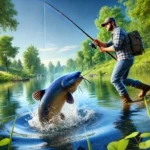Explore Canada's Ultimate Fishing, Hunting, and Wildlife Adventures
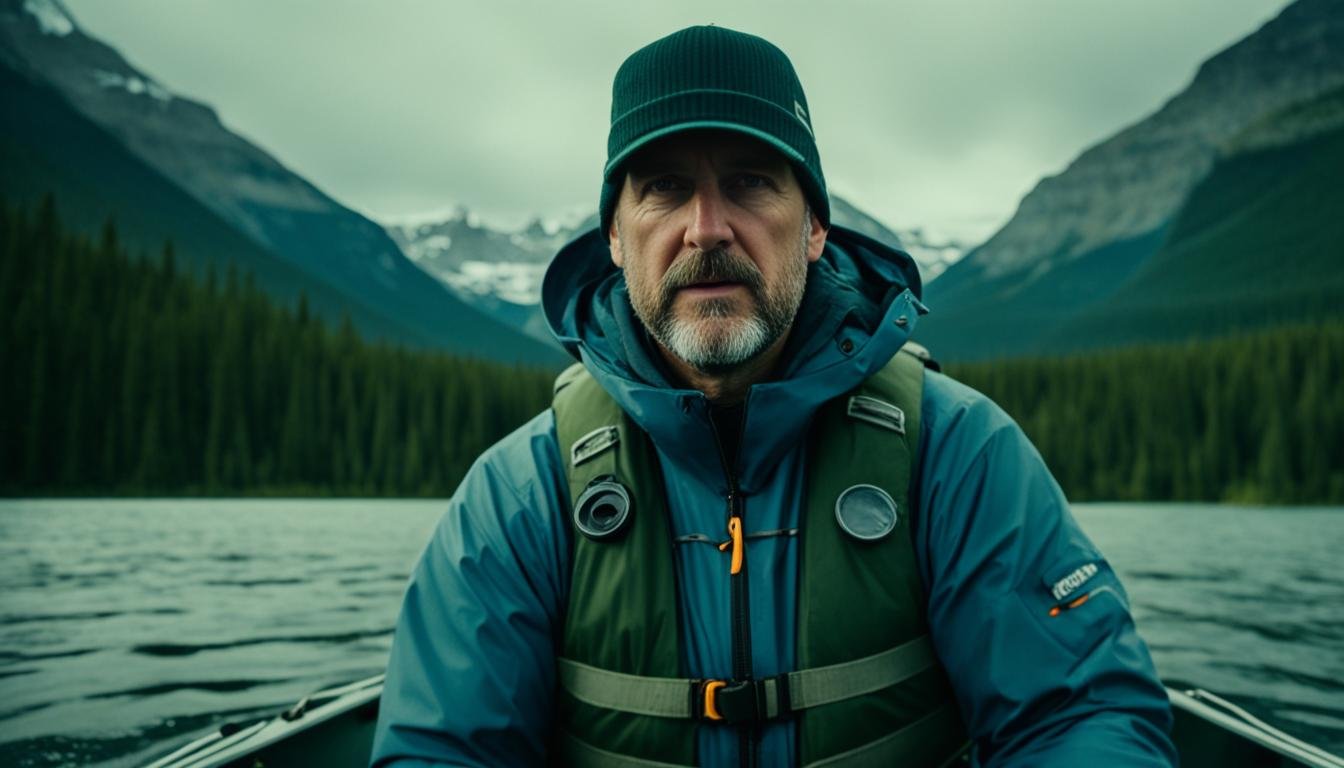
Fishing for Specific Species: Tips for Canadian Anglers in 2024
Curious about catching your target fish in Canada’s diverse waters?
In 2024, your chances of reeling in that dream catch are improving. This guide offers expert tips to elevate your fishing game for various species.
Consider this: Could understanding fish behavior be the key to your next big catch? Canada’s vast fisheries offer endless possibilities for dedicated anglers. By learning species-specific fishing, you’ll boost your chances of success in 2024.
Key Takeaways about Fishing for Specific Species
- Discover the top catches in Canada’s freshwater and saltwater fisheries
- Explore the best fishing spots and seasonal calendars for your target species
- Master proven techniques to target specific fish, from trout and salmon to pike and walleye
- Plan your fishing trips with insider knowledge of Canada’s diverse angling destinations
- Understand the latest regulations and sustainable practices to fish responsibly
Top Catches in Canada
Canada’s waters offer anglers a wide range of fish species to catch. From trout and bass to salmon and saltwater giants, the country’s waterways are full of prime game fish.
Freshwater Favourites
Canada’s freshwater holds many sought-after fish species. Trout are prized for their fighting spirit and delicious taste. They include Rainbow, Cutthroat, Steelhead, Brook, and Lake Trout.
Bass, both Largemouth and Smallmouth, are known for their acrobatic jumps. Walleye, a popular catch, can be found in many Canadian waters. Lake of the Woods and Lake Erie are hotspots.
Muskellunge (Musky), the “fish of 10,000 casts,” tests an angler’s skill. They’re often found in southern Ontario and Quebec.
Salmon Fishing in Canada
Canada’s coasts offer great Salmon fishing. Anglers can catch six different salmon species. These include Chinook, Coho, Sockeye, Pink, Chum, and Atlantic Salmon.
Each salmon type presents unique challenges. Fishing methods range from fly fishing to trolling and mooching.
Saltwater Sensations
Canada’s saltwater fishing is equally impressive. Prized catches include Rockfish, Lingcod, Halibut, and Tuna. These fish are known for their hard fights and tasty meat.
| Fish Species | Typical Record Weight |
|---|---|
| Brook Trout | 14 pounds 8 ounces |
| Brown Trout | 34 pounds 6.1 ounces |
| Coho Salmon | 29 pounds 2 ounces |
| Walleye | 22.25 pounds |
| Chinook Salmon | 46 pounds 3 ounces |
| Muskellunge | 65.0 pounds |
Canada Fishing Seasons

Seasonal Calendars
Canadian anglers have access to detailed seasonal fishing calendars. These resources outline prime times for various fish species across the country. They provide insights into arrival and peak seasons for freshwater and saltwater species.
The annual Angler’s Guide 2024-2025 from Fisheries and Oceans Canada is a valuable resource. It features seasonal information for Salmon and Trout angling in Newfoundland and Labrador. The guide also details active periods for Bass, Trout, Musky, and Walleye in different regions.
These calendars help anglers target the right species at optimal times. This knowledge can significantly improve the quality of fishing experiences. It allows anglers to plan their trips with precision.
| Fish Species | Typical Seasonal Availability in Canada |
|---|---|
| Salmon | Dependent on the specific Salmon run, with various species like Chinook, Coho, and Sockeye arriving at different times of the year |
| Trout (Rainbow, Brook, Brown) | Open all year, with peak seasons varying by region and species |
| Walleye | Spring and early summer, with the best fishing often during the spawn |
| Largemouth and Smallmouth Bass | Late spring through fall, with the most active periods during the pre-spawn, spawn, and post-spawn |
| Northern Pike | Spring and early summer, with the best opportunities during the spawn |
| Muskellunge | Summer and early fall, with the most productive times often in the late summer and early autumn months |
Seasonal fishing calendars are invaluable tools for Canadian anglers. They help in planning trips and targeting specific species throughout the year. With this knowledge, anglers can enhance their fishing experiences.
Fishing for Specific Species

Understanding fish habits is crucial for successful angling in Canada. Tailoring your approach to each species boosts your chances of a great catch. Let’s explore key strategies for popular freshwater and saltwater fish.
Trout Fishing
Trout thrive in cool, oxygen-rich waters across Canada. Focus on these areas and observe their feeding patterns. Use light spinning gear with small lures or live bait for best results.
Bass Fishing
Canada offers excellent bass fishing opportunities. Bass prefer cover like submerged logs, rocks, and aquatic plants. Try cast-and-retrieve lures such as crankbaits, spinnerbaits, and soft plastics.
Walleye Fishing
Walleye, prized for taste and fight, inhabit cooler waters. Look for them near underwater ledges, rocky points, and river channels. Live bait, jigs, and crankbaits are effective for catching walleye.
Musky Fishing
Muskies, the “fish of 10,000 casts,” are a thrilling challenge. These predators live in Canada’s premier musky waters. Use large lures and a patient approach when pursuing these toothy giants.
Knowing fish habits helps anglers choose the right techniques and gear. Species-specific fishing Canada can be incredibly rewarding. Targeting specific fish and using appropriate fishing techniques by species leads to satisfying results.
“The key to consistent success when species-specific fishing Canada is to thoroughly understand the target fish’s behavior and habitat preferences.”
Best Canada Fishing Spots
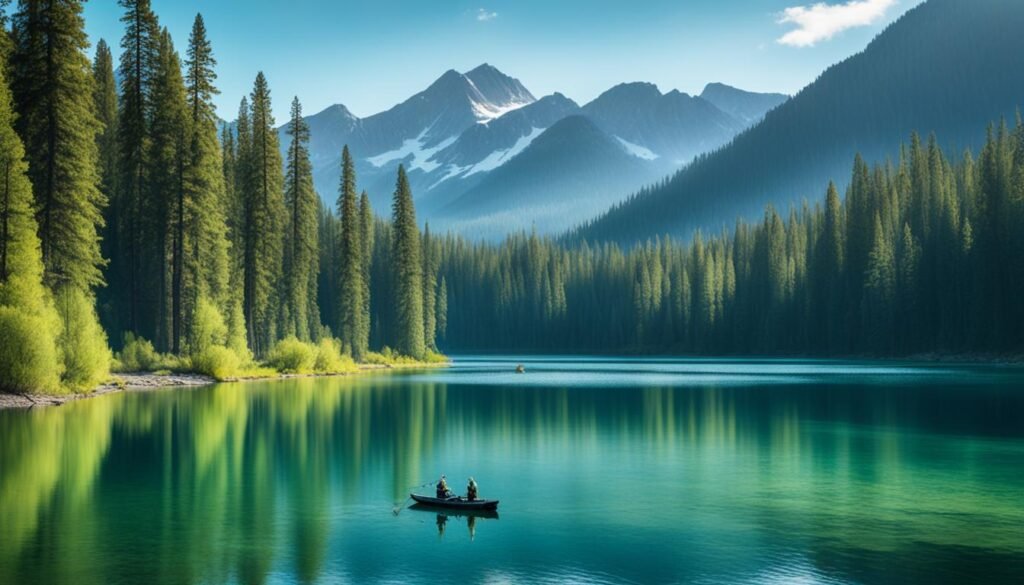
Canada’s landscape offers a wealth of excellent fishing destinations. Anglers can enjoy unique experiences from the Pacific coast to prairie lakes and eastern rivers. These spots provide a variety of fish species and stunning natural settings.
Renowned Fishing Destinations
Canada’s top fishing spots span many provinces, each with its own charm. Lake Ontario in Ontario houses over 120 fish species. It’s famous for its Chinook Salmon and Brown Trout.
In Alberta, Bow River is known for its Brown and Rainbow Trout. The Calgary area is particularly good for these fish.
Last Mountain Lake in Saskatchewan hosts two major Walleye fishing tournaments. These events happen in June and September, drawing many anglers.
Lake Dauphin in Manitoba is famous for large Walleye and Northern Pike. You can also catch Carp, Sauger, and Freshwater Drum here.
Quebec’s Saguenay region offers ice fishing on Lake Saint Jean. You can catch Walleye, Perch, and Pike. The Saguenay River is great for Salmon and Trout fishing.
North Lake in Prince Edward Island is Canada’s Bluefin Tuna hotspot. These massive fish can weigh up to 1000 lbs.
Bras d’Or Lake in Nova Scotia offers both freshwater and saltwater fishing. You can catch trophy Brook, Brown, and Rainbow Trout. Sea-run fish like Cod, Herring, and Flounder are also found here.
| Fishing Destination | Prized Species |
|---|---|
| Lake Ontario, Ontario | Chinook Salmon, Brown Trout |
| Bow River, Alberta | Brown Trout, Rainbow Trout |
| Last Mountain Lake, Saskatchewan | Walleye |
| Lake Dauphin, Manitoba | Walleye, Northern Pike |
| Saguenay, Quebec | Walleye, Perch, Pike, Salmon, Trout |
| North Lake, Prince Edward Island | Bluefin Tuna |
| Bras d’Or Lake, Nova Scotia | Brook Trout, Brown Trout, Rainbow Trout, Cod, Herring, Flounder |
These fishing spots offer diverse species and trophy-sized catches. Anglers of all skill levels can enjoy unforgettable adventures here. From freshwater to saltwater thrills, Canada’s top fishing spots promise exciting experiences.
Canada Fishing Techniques

Canada offers diverse fishing opportunities with various techniques to explore. Anglers can enhance their success and enjoyment by understanding these methods. In 2024, 35% of Canadian anglers used specific techniques for particular fish species.
Freshwater Fishing Techniques
Freshwater fishing is popular in Canada. Anglers use different methods for various water bodies and target species. Shore fishing, boat fishing, and ice fishing are common techniques for catching trout, walleye, and bass.
- Shore fishing allows access to many water bodies. It’s convenient for family and friends to join in.
- Ice fishing is a beloved winter pastime. It involves drilling holes in frozen lakes to catch walleye and trout.
- Boat fishing helps reach remote spots. It often yields impressive catches from canoes or larger vessels.
Saltwater Fishing Techniques
Canada’s coastal regions offer rich saltwater fishing opportunities. Anglers can catch salmon, halibut, and tuna using various methods.
- Trolling: A popular method for salmon. It involves towing baits behind a moving boat.
- Casting: Uses rods and reels to cast baits. Anglers target specific areas where fish may be.
- Fly fishing: Uses lightweight rods and special flies. It has seen 25% growth among Canadian anglers.
| Fishing Technique | Targeted Species | Popularity Trend |
|---|---|---|
| Trout Fishing | Trout | 20% increase |
| Ice Fishing | Walleye | 15% decrease |
| Fly Fishing | Salmon | 25% increase |
Canada’s landscape and waters offer many chances to explore fishing techniques. Anglers use traditional and new methods. The joy of fishing remains a cherished pastime for generations to come.
Fishing Trips in Canada
Canada’s wilderness and waterways make it a top fishing destination. The country offers diverse fishing trips for all skill levels. You can choose guided adventures or self-guided getaways to suit your preferences.
Guided Fishing Adventures
Guided fishing tours are great for boosting your success rate. Local experts lead these trips, sharing their knowledge of fish species and techniques. These adventures often include transport, gear, and lodging for a hassle-free experience.
Self-Guided Fishing Getaways
Self-guided fishing vacations let you explore Canada’s waters at your own pace. You can discover hidden spots and try different fishing methods. These trips usually provide boats or canoes, so you can focus on catching fish.
Canada’s fishing options cater to all preferences. With various trips across the country, you’re sure to find your perfect fishing adventure.
Canada Fishing Regulations
Knowing Canada’s fishing rules is vital for anglers. These rules protect our water resources and guide responsible fishing. Let’s explore the key aspects of Canada’s fishing regulations.
Licensing Requirements
You need a valid fishing license to fish in Canada. Requirements and fees vary by province, territory, age, and fishing type. Ontario, for example, has different licenses for residents, non-residents, and youth.
Research and get the right license before your fishing trip. This ensures you’re following the law and supporting conservation efforts.
Catch Limits and Restrictions
Canada has catch limits and fishing restrictions to protect fish populations. These rules set maximum catch numbers, size limits, and prohibited species. Anglers must know the rules for their fishing location.
Limits can differ across provinces and territories. Always check local regulations before you fish.
| Species | Daily Catch Limit | Possession Limit |
|---|---|---|
| Walleye and Sauger | 3 | 6 |
| Largemouth and Smallmouth Bass | 6 | 12 |
| Black and White Crappie | 30 | 60 |
Following Canada’s fishing regulations helps preserve our fisheries. Understanding and obeying these rules supports the future of fishing in Canada.
Gear Essentials for Canadian Anglers
Having the right fishing gear is key to a successful angling experience in Canada. The essential tackle and equipment can make all the difference in your fishing adventures.
For beginners, a monofilament fishing line with a 10-12 pound test is a great choice. It’s durable, affordable, and casts smoothly for various fishing scenarios.
A varied selection of hooks in your tackle box is crucial. Different sizes and shapes cater to various bait types and fish species. Live bait like worms, minnows, or crickets can be highly effective.
- Monofilament fishing line (10-12 lb test)
- Assortment of hooks in various sizes and shapes
- Live bait (worms, minnows, crickets)
Experienced anglers benefit from multiple rods and reels tailored to specific techniques. A rod-carrying case or rack helps organize and protect your gear. Safety is crucial, so pack life jackets and a reliable emergency radio.
Boat accessories like fenders and suspension seats enhance comfort during extended fishing trips. The Ugly Stik GX2 is a popular rod-reel combo suitable for various fishing scenarios.
Equip yourself with essential fishing gear Canada offers to make the most of angling opportunities. Always check local regulations and practice sustainable fishing methods for future enjoyment.
Fish Species Identification Guide
Identifying fish species is vital for Canadian anglers exploring diverse waterways. This guide helps recognize popular freshwater and saltwater fish in Canada. It equips anglers with knowledge to appreciate aquatic ecosystems and make informed decisions about their catches.
The guide offers details on various fish species, from iconic to lesser-known. It covers both Canadian fish species and freshwater fish. Saltwater fish are also included, highlighting unique features of each species.
Freshwater Fish Identification
- Yellow Perch: Length – 15 to 30 cm (6-12 in). Typically found in clear waters with some vegetation throughout Ontario.
- Smallmouth Bass: Length – 25 to 50 cm (10-20 in). Habitat in clear, rocky waters with little vegetation from southern Ontario to northwestern Ontario.
- Walleye: Length – 25 to 85 cm (10-33 in). Distributed in lakes and rivers throughout most of Ontario.
- Sauger: Length – 25 to 41 cm (10-16 in). Found in large, shallow, turbid waters throughout Ontario.
- Northern Pike: Length – 45 to 100 cm (18-39 in). Inhabit quiet, vegetated waters across Ontario.
- Muskellunge: Length – 71 to 137 cm (28-54 in). Geographically discontinuous in southern and near northeastern Ontario, also found in the Lake of the Woods/Rainy River area.
- Largemouth Bass: Length – 25 to 55 cm (10-22 in). Primarily in warm, weedy, slow, or still waters in southern Ontario.
- Rock Bass: Length – 15 to 20 cm (6-8 in). Habitat includes warm, slow, or still shallows with rocky bottoms, up north to Lake Abitibi.
- Bluegill: Length – 15 to 30 cm (6-12 in). Commonly found in warm, vegetated, still waters throughout southern Ontario.
- White Sucker: Length – 30 to 50 cm (12-20 in). Mainly in warm, shallow lakes and tributary rivers across Ontario.
Saltwater Fish Identification
- Rainbow Trout/Great Lakes (Steelhead): Length – 35 to 60 cm (14-24 in). Distribution includes all Great Lakes and many tributaries.
- Brown Bullhead: Length – 36 to 53 cm (14-21 in). Found in Great Lakes and larger lakes and rivers south of the French River.
- Channel Catfish: Length – Unspecified. Inhabits Great Lakes and larger lakes and rivers south of the French River.
- Freshwater Drum: Length – 15 to 25 cm (6-10 in). Spread across the Great Lakes area, including some inland lakes.
This guide is a valuable resource for Canadian anglers. It helps them recognize diverse fish species and appreciate Canada’s rich aquatic ecosystems. Anglers can use this knowledge to enhance their fishing experiences.
The guide uses data from various sources, including the annual Bottom Trawl Survey. It offers a detailed overview of fish species in the Estuary and Gulf of St. Lawrence. The survey now includes more ecosystem components, giving anglers a better understanding of fish populations.
| Fish Species | Length | Habitat |
|---|---|---|
| Yellow Perch | 15 to 30 cm (6-12 in) | Clear waters with some vegetation throughout Ontario |
| Smallmouth Bass | 25 to 50 cm (10-20 in) | Clear, rocky waters with little vegetation from southern Ontario to northwestern Ontario |
| Walleye | 25 to 85 cm (10-33 in) | Lakes and rivers throughout most of Ontario |
| Sauger | 25 to 41 cm (10-16 in) | Large, shallow, turbid waters throughout Ontario |
| Northern Pike | 45 to 100 cm (18-39 in) | Quiet, vegetated waters across Ontario |
| Muskellunge | 71 to 137 cm (28-54 in) | Geographically discontinuous in southern and near northeastern Ontario, also found in the Lake of the Woods/Rainy River area |
| Largemouth Bass | 25 to 55 cm (10-22 in) | Warm, weedy, slow, or still waters in southern Ontario |
| Rock Bass | 15 to 20 cm (6-8 in) | Warm, slow, or still shallows with rocky bottoms, up north to Lake Abitibi |
| Bluegill | 15 to 30 cm (6-12 in) | Warm, vegetated, still waters throughout southern Ontario |
| White Sucker | 30 to 50 cm (12-20 in) | Warm, shallow lakes and tributary rivers across Ontario |
Anglers can improve their fishing experiences by learning about Canadian fish species. This knowledge also helps with sustainable management of these valuable natural resources. Understanding fish habitats and features is key to successful angling.
Fishing Hotspots by Province
Canada’s landscape offers anglers many fishing destinations across its provinces and territories. Each region has unique fish species and prime angling spots. Let’s explore top fishing hotspots in various Canadian provinces.
British Columbia
British Columbia is famous for its freshwater fisheries with iconic species. These include rainbow trout, cutthroat trout, and kokanee salmon. The Cowichan River is the best trout fishery on Vancouver Island.
The Bow River in Alberta is known for its brown and rainbow trout. These rivers offer premium fishing opportunities for anglers of all skill levels.
Alberta
The Bow River flows through Calgary, offering great brown and rainbow trout fishing. Last Mountain Lake in Saskatchewan is famous for trophy-sized walleye and northern pike.
Lake Dauphin in Manitoba is known for year-round walleye and northern pike fishing. These lakes provide diverse fishing experiences throughout the seasons.
Ontario
Ontario is an angler’s paradise with over 2,700 fishing locations. Lake Ontario has pike, walleye, and bass. It also hosts chinook salmon and brown trout.
Quebec
Quebec offers exceptional ice fishing for walleye, perch, and pike in Saguenay. The province’s waterways provide access to many freshwater and saltwater species.
Atlantic Provinces
The Atlantic Provinces are known for great saltwater and freshwater fishing. North Lake in Prince Edward Island is Canada’s giant bluefin tuna hotspot.
Bras d’Or Lake in Nova Scotia has brook, brown, and rainbow trout. It also offers cod, herring, flounder, and striped bass. The Gander River in Newfoundland is an Atlantic salmon paradise.
Canada’s provinces offer many fishing hotspots to explore. You can find trophy-sized fish, scenic rivers, or unique winter fishing experiences.
Sustainable Fishing Practices
Canada’s fisheries need responsible stewardship. Sustainable fishing practices ensure thriving aquatic ecosystems. Anglers play a vital role in conserving marine resources for future generations.
Catch-and-release is a cornerstone of sustainable fishing. It minimizes impact on fragile fish populations. Proper techniques are crucial for fish survival.
Proper catch-and-release techniques, such as using barbless hooks, keeping fish in the water, and avoiding excessive handling, are essential to ensure the survival of released fish.
Regulations are crucial for conservation efforts. Adhering to catch limits and size restrictions helps maintain aquatic ecosystems. Responsible anglers must comply with these rules to protect Canada’s fisheries.
| Key Sustainable Fishing Statistics | Value |
|---|---|
| Estimated annual global removal of wildlife from the sea | 77 billion kilograms (170 billion pounds) |
| Decline in bluefin tuna population since 1970 | 71 to 79 percent |
| Proportion of world’s fish stocks that are fully fished | 60 percent |
| Proportion of world’s fish stocks that are overfished | 33 percent |
| Estimated annual value of the global seafood industry | 401 billion U.S. dollars |
Canadian anglers can help preserve aquatic resources through sustainable practices. Conscientious catch-and-release and respecting regulations are key. Every angler contributes to Canada’s sustainable fishing future.
“The past is a foreign country; they do things differently there.” – L.P. Hartley
A shift towards sustainable fishing is vital for Canada’s fisheries. Conservation-minded approaches safeguard fish abundance and diversity. This ensures rewarding fishing experiences for future generations of anglers.
Conclusion
Canada offers countless opportunities for anglers seeking unforgettable experiences. From coastal salmon fishing to serene lake angling, the country’s diverse waters promise endless adventures. Its picturesque landscapes provide the perfect backdrop for memorable catches.
This Canada fishing guide has armed you with essential knowledge for your next trip. You’ve learned about top catches, seasonal patterns, and important regulations. Now you’re ready to explore the vast world of angling in Canada.
As you begin your Canada fishing adventure, remember to practice sustainable techniques. Protecting these ecosystems ensures future generations can enjoy them too. By following comprehensive fishing tips, you’ll have an amazing time on Canadian waters.
FAQ about Fishing for Specific Species
What is the best month for fishing in Canada?
The best month for fishing in Canada varies depending on the region and target species, but generally:
- May to June: Excellent for many species as the waters warm up and fish become more active.
- September to October: Cooler temperatures and less crowded waters make for great fishing conditions.
- July and August: Peak season for many fishing lodges, offering good weather and diverse fishing opportunities.
- January to March: Ideal for ice fishing in many parts of Canada.
Which Canadian province has the best fishing?
This can be subjective and depends on the target species, but some top contenders include:
- Ontario: Known for diverse fishing opportunities, including bass, walleye, and northern pike.
- British Columbia: Famous for salmon and steelhead fishing.
- Quebec: Offers excellent fishing for brook trout and Atlantic salmon.
- Saskatchewan: Known for its trophy pike and walleye fishing.
What is Canada doing about overfishing?
Canada has implemented several measures to combat overfishing:
- Regulation and Quotas: Strict fishing quotas and regulations to manage fish stocks sustainably.
- Marine Protected Areas (MPAs): Establishing MPAs to protect critical habitats and biodiversity.
- Monitoring and Enforcement: Enhanced monitoring and enforcement to ensure compliance with fishing regulations.
- Research and Conservation: Investing in scientific research and conservation programs to better understand fish populations and ecosystems.
What is the most popular fish to catch in Canada?
The most popular fish to catch in Canada include:
- Walleye: Highly sought after for its taste and abundance in many Canadian lakes.
- Northern Pike: Known for its size and aggressive nature.
- Smallmouth and Largemouth Bass: Popular among sport fishermen.
- Salmon: Especially in British Columbia and the Atlantic provinces.
What is the rarest fish in Canada?
Some of the rarest fish in Canada include:
- Atlantic Whitefish: Critically endangered and found only in Nova Scotia.
- Speckled Dace: Found in a limited range in British Columbia.
- Paddlefish: Historically found in the Great Lakes, now extremely rare.
What are the 3 main fishing areas in Canada?
Three major fishing regions in Canada are:
- The Great Lakes region (Ontario): Known for diverse freshwater fishing opportunities.
- The Pacific Coast (British Columbia): Famous for salmon and halibut fishing.
- The Atlantic Coast (Newfoundland, Nova Scotia, New Brunswick): Renowned for its Atlantic salmon and cod fisheries.
Which fishery is most valuable to Canada?
The most valuable fishery to Canada is:
- Lobster Fishery: Particularly in the Atlantic provinces, it is one of the most economically significant fisheries.
- Salmon Fishery: Especially in British Columbia, it is crucial both economically and culturally.
- Snow Crab Fishery: Another highly valuable fishery in the Atlantic provinces.
Which province has the largest fishing industry in Canada?
British Columbia and the Atlantic provinces (Newfoundland and Labrador, Nova Scotia, New Brunswick, and Prince Edward Island) have the largest fishing industries in Canada. These regions are known for their significant contributions to both commercial and recreational fishing sectors.
Where does Canada get most of its fish from?
Canada sources most of its fish from:
- Atlantic Ocean: The Atlantic provinces contribute significantly to Canada’s fish supply, particularly lobster, snow crab, and various groundfish.
- Pacific Ocean: British Columbia is a major source of salmon, halibut, and other marine species.
- Inland Waters: Ontario and other provinces with large freshwater systems provide substantial amounts of freshwater fish like walleye, pike, and bass.
These answers provide a comprehensive overview of fishing in Canada, highlighting the best times, places, and practices for both beginners and seasoned anglers.
What are the top freshwater species targeted by anglers in Canada?
Canada offers a wide range of freshwater fish species for anglers. Trout, including Rainbow, Cutthroat, and Lake Trout, are popular choices. Bass, Walleye, and Muskellunge are also sought-after by fishing enthusiasts.
What Salmon species are available for fishing in Canada?
Canada provides excellent Salmon fishing opportunities. Six species can be found: Chinook, Coho, Sockeye, Pink, Chum, and Atlantic Salmon. Each offers a unique fishing experience for anglers.
What are some of the top saltwater species found in Canada’s coastal waters?
Canada’s vast coastlines are home to diverse saltwater species. Anglers can target Rockfish, Lingcod, Halibut, and Tuna in the Pacific and Atlantic Oceans.
When are the prime times to target various fish species in Canada?
The article offers detailed seasonal calendars for targeting different fish species. It covers peak times for freshwater fish like Bass, Trout, and Walleye. The guide also includes information on Salmon run seasons.
What are some of Canada’s renowned fishing destinations?
Canada boasts numerous famous fishing spots across its provinces. British Columbia, Alberta, Ontario, Quebec, and the Atlantic Provinces offer exceptional angling opportunities. These areas are known for their abundance of sought-after fish species.
What fishing techniques and methods are commonly used by anglers in Canada?
The guide explores various fishing techniques used in Canada. It covers both traditional and modern tactics for freshwater and saltwater fishing. Effective presentations, terminal tackle, and specialized gear are discussed in detail.
What are the key fishing regulations and requirements in Canada?
The article outlines important fishing regulations in Canada. It covers licensing, catch limits, and other restrictions. Anglers must be aware of these rules when fishing in different provinces.
What essential gear and equipment should Canadian anglers have in their arsenal?
The guide lists essential gear for Canadian anglers. This includes rods, reels, lines, lures, and terminal tackle. Specialized equipment for specific fishing environments is also discussed.
How can anglers identify the fish they encounter in Canada’s waters?
The guide features a comprehensive species identification section. It provides detailed descriptions and illustrations of popular freshwater and saltwater fish. Anglers can use this information to identify their catches accurately.
What are some of the best fishing hotspots across Canada’s provinces and territories?
The article highlights top fishing spots in Canada’s provinces and territories. It covers renowned rivers, lakes, and coastal areas. These locations are known for their diverse fish species and exceptional angling opportunities.
How can anglers practice sustainable fishing in Canada?
The guide emphasizes the importance of sustainable fishing practices. It covers catch-and-release techniques and proper fish handling. The role of regulations in conservation and ways to minimize environmental impact are also discussed.
Unforgettable Manitoba Fly In Fishing Adventures: Explore the Untamed Wilderness
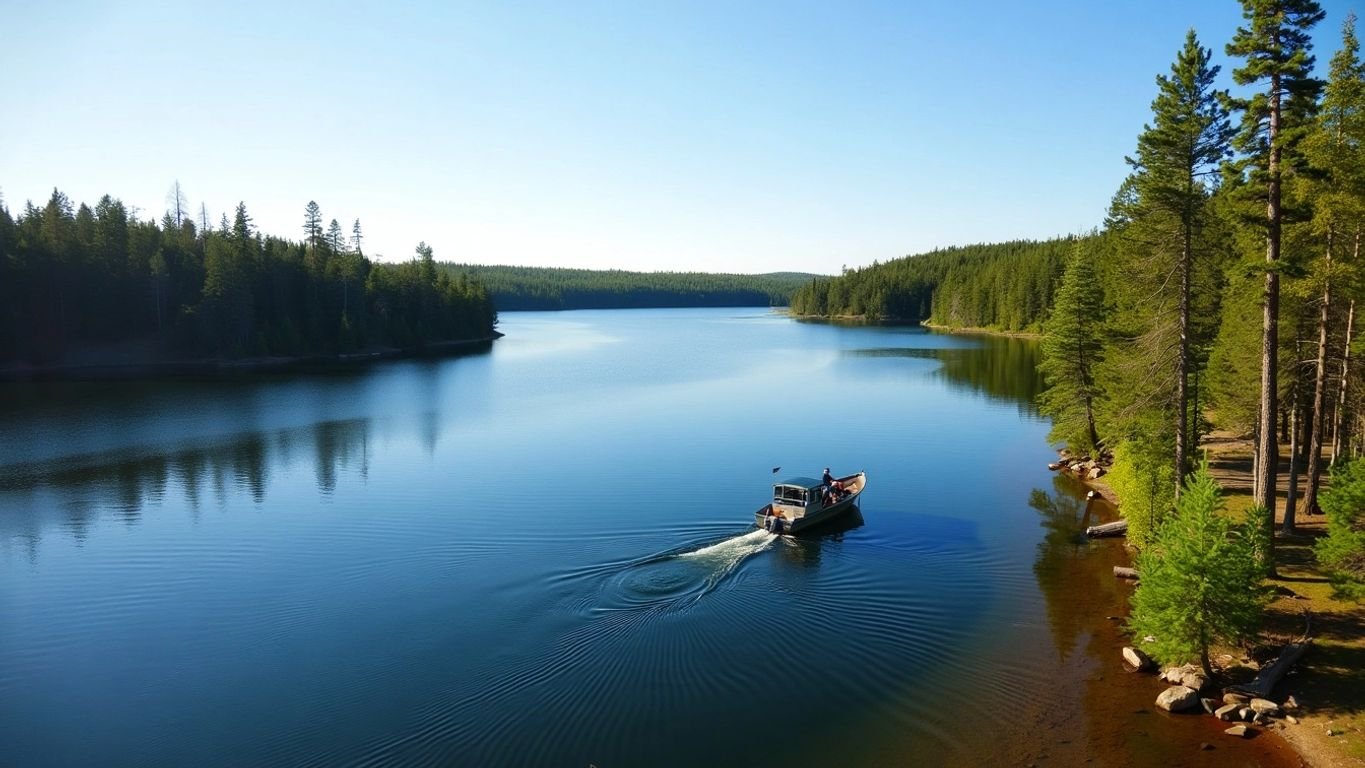
Discover thrilling fly-in fishing adventures in Manitoba’s pristine lakes and untouched wilderness. Unforgettable catches await!
Discovering the Best Good Fishing Spots in Ontario: A Guide for Anglers
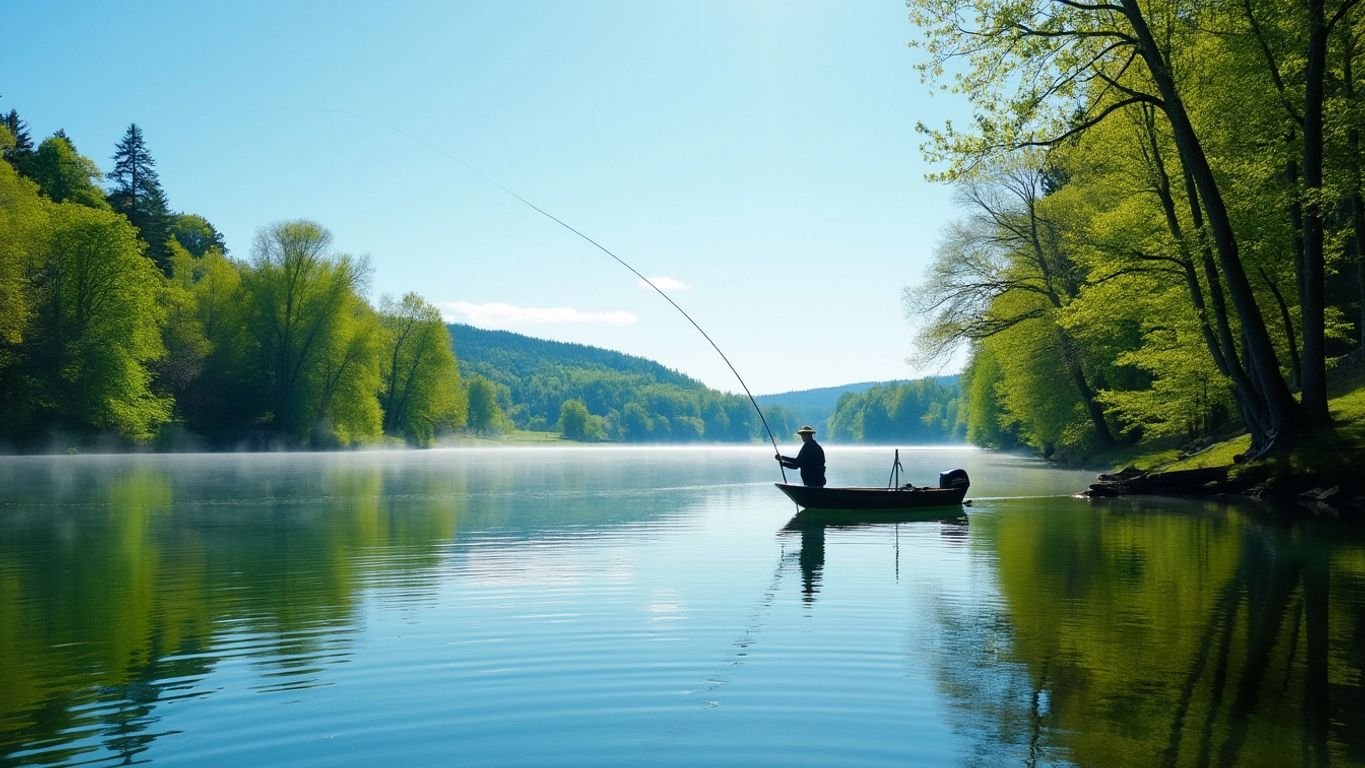
Ontario, Canada, is a true angler’s paradise, boasting over 250,000 lakes and rivers teeming with diverse fish species. Whether you’re…
The Ultimate Guide to Fishing at Night in Ontario: Tips and Tricks for a Successful Experience

Master night fishing in Ontario with tips, gear, and top spots for an unforgettable angling adventure!
Whitefish Fishing Guide & Tips in Canadian Waters
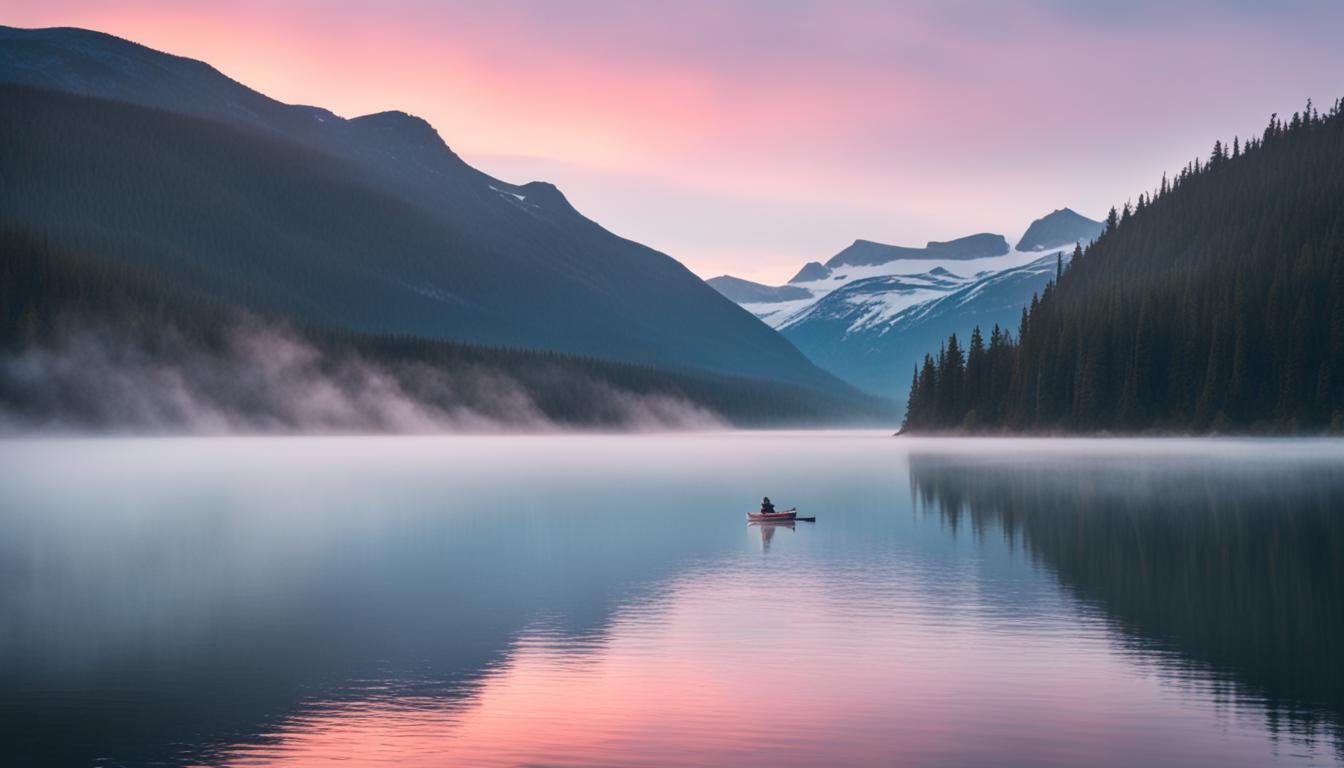
Ultimate Guide to Char Fishing in Canada
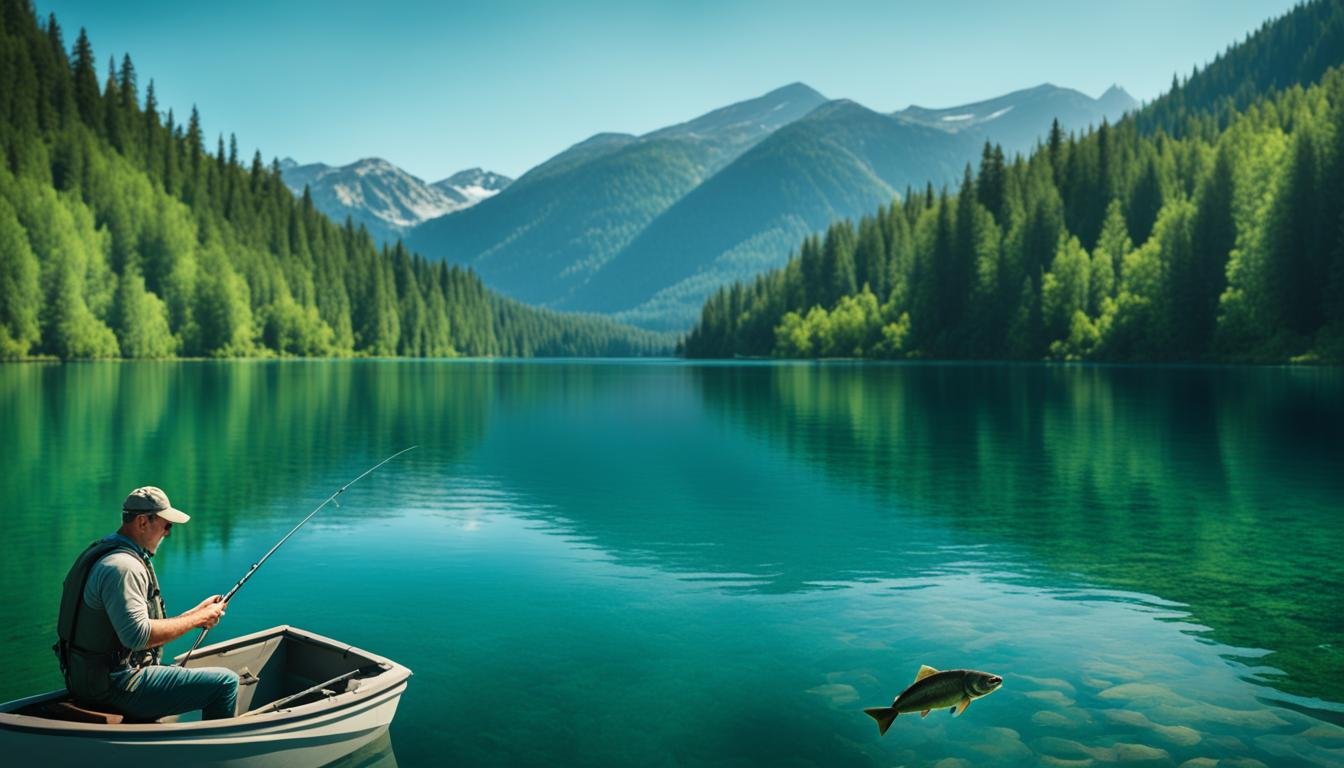
Explore the top locations and insider tips for successful Char Fishing in Canada, including gear recommendations, techniques, and seasonal advice.
Ultimate Guide to Muskie Fishing in Canada
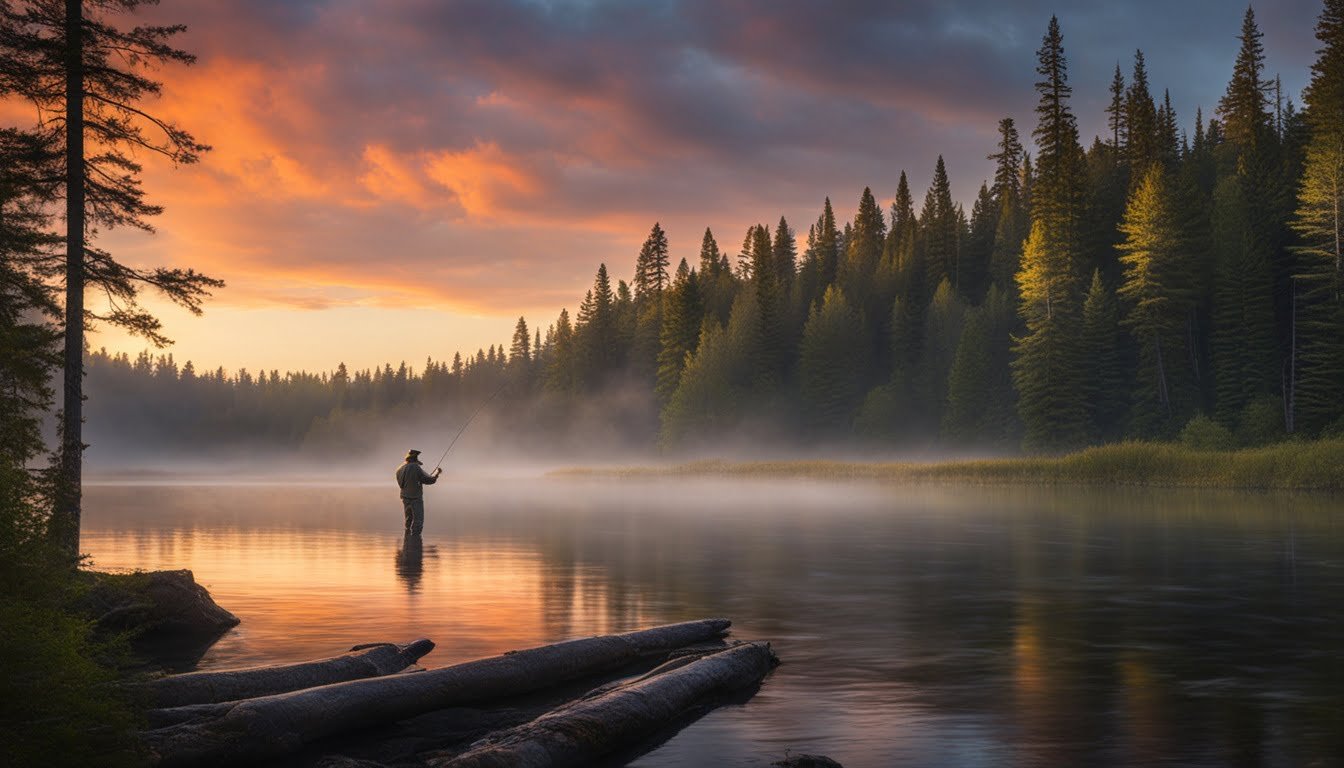
Perch Fishing Tips and Hot Spots in Canada
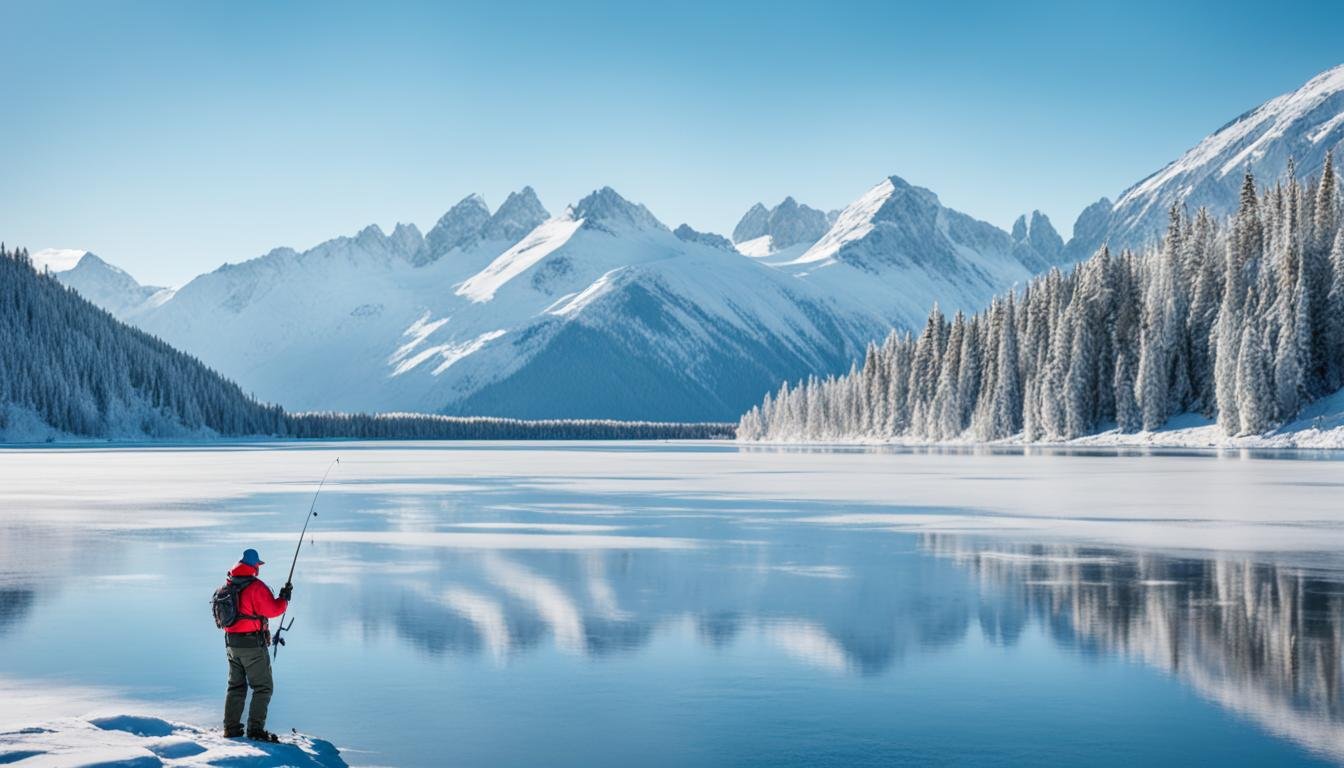
Essential Walleye Fishing Tips for Canadian Anglers
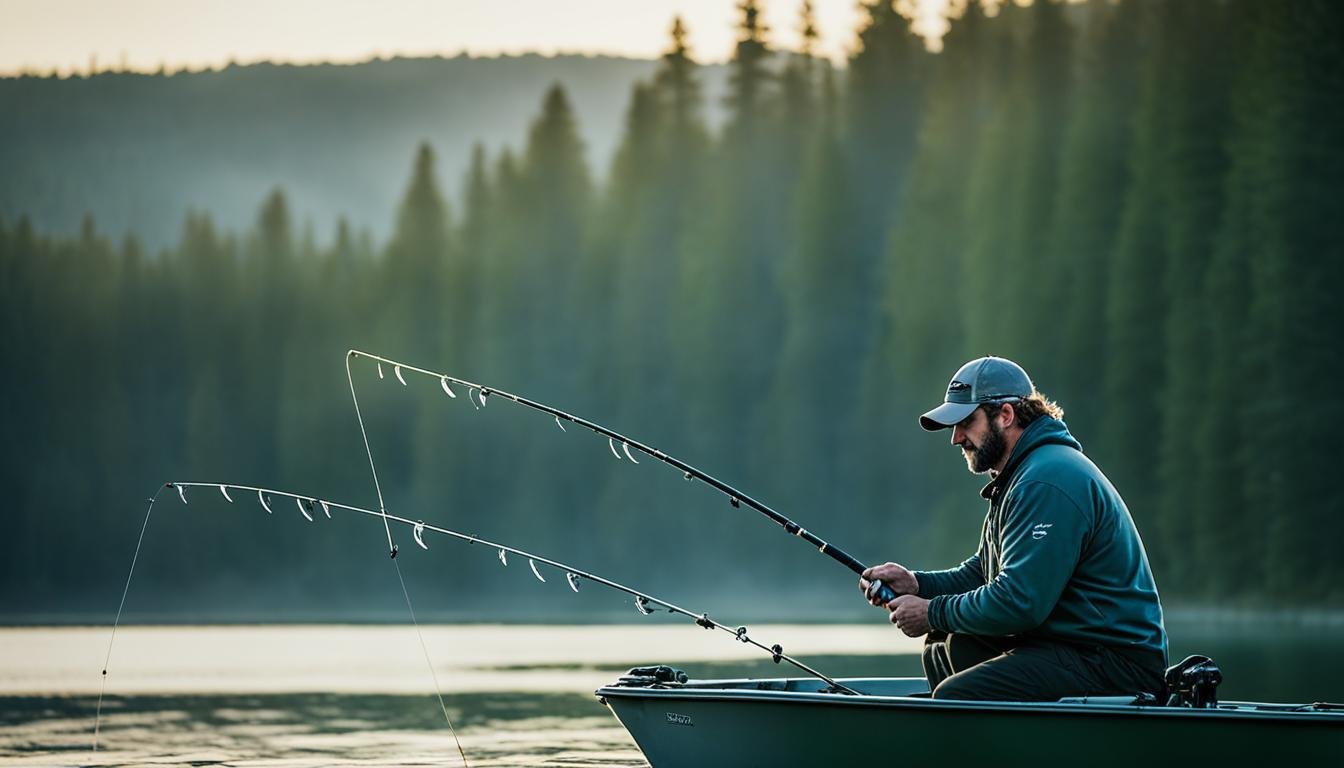
Ultimate Guide to Sockeye Salmon Fishing in Canada
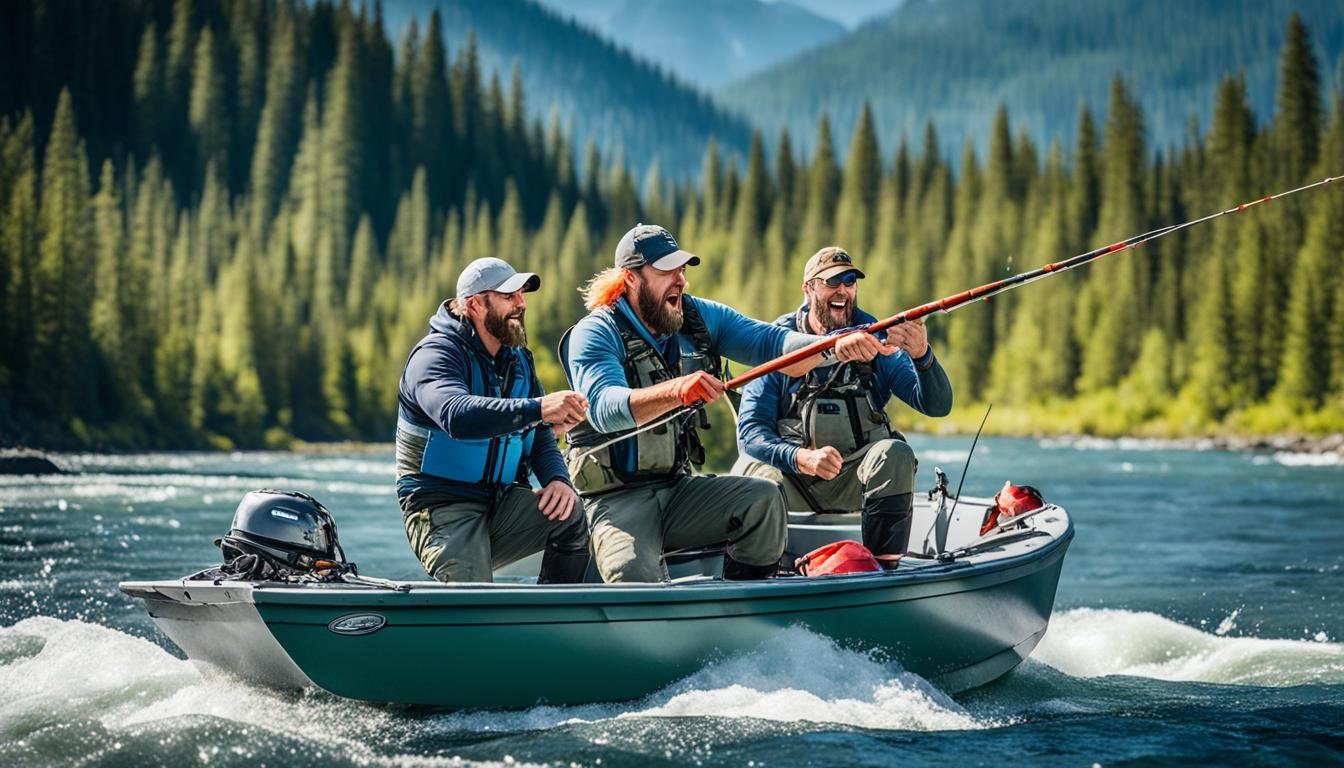
Ultimate Guide to Chinook Salmon Fishing in Canada
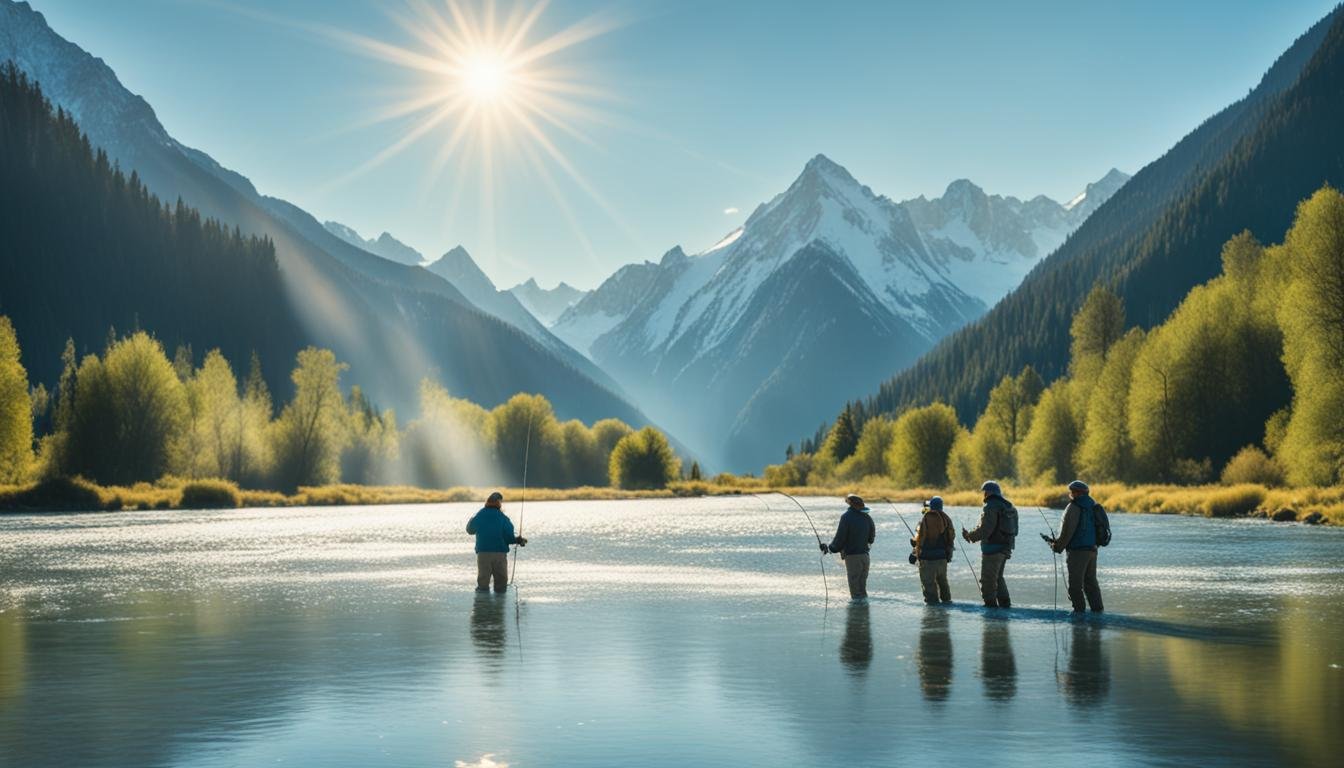
Essential Guide to Coho Salmon Fishing in Canada
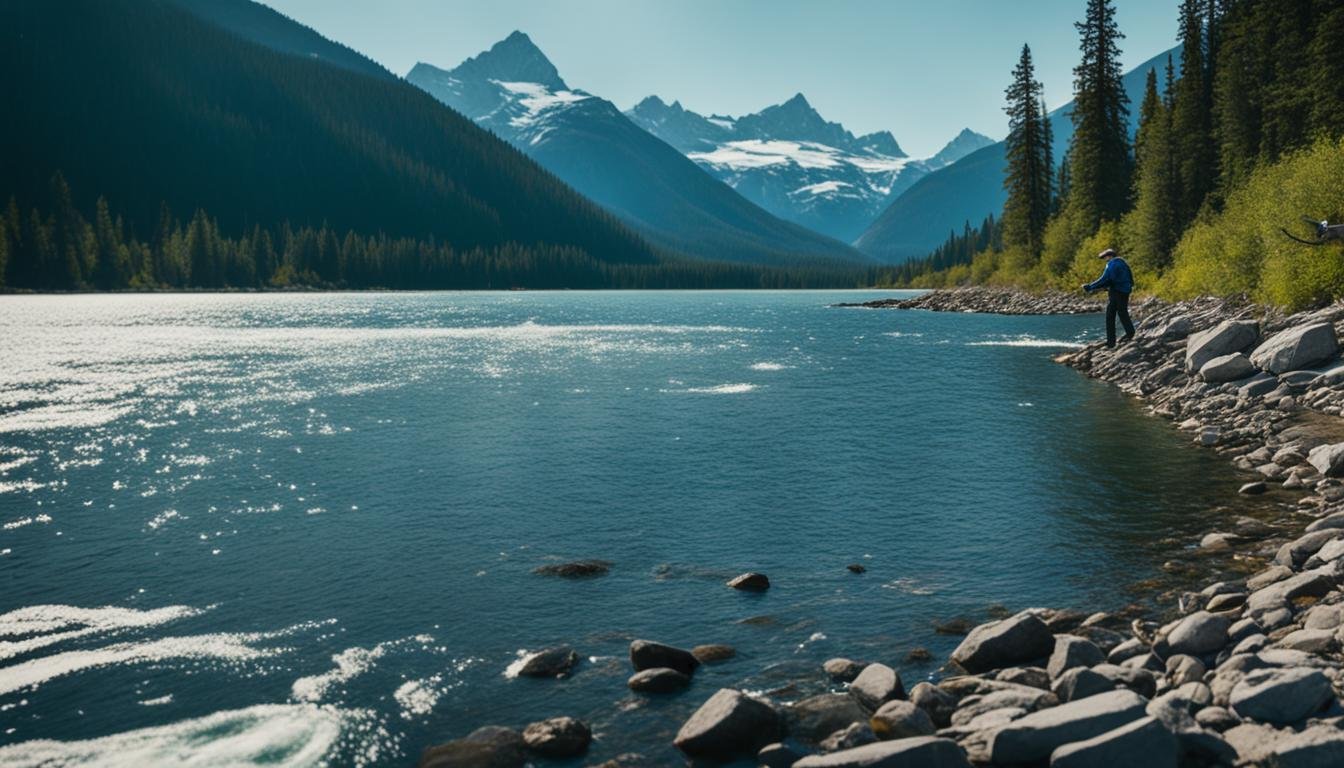
Arctic Char Fishing Guide in Canada’s Waters
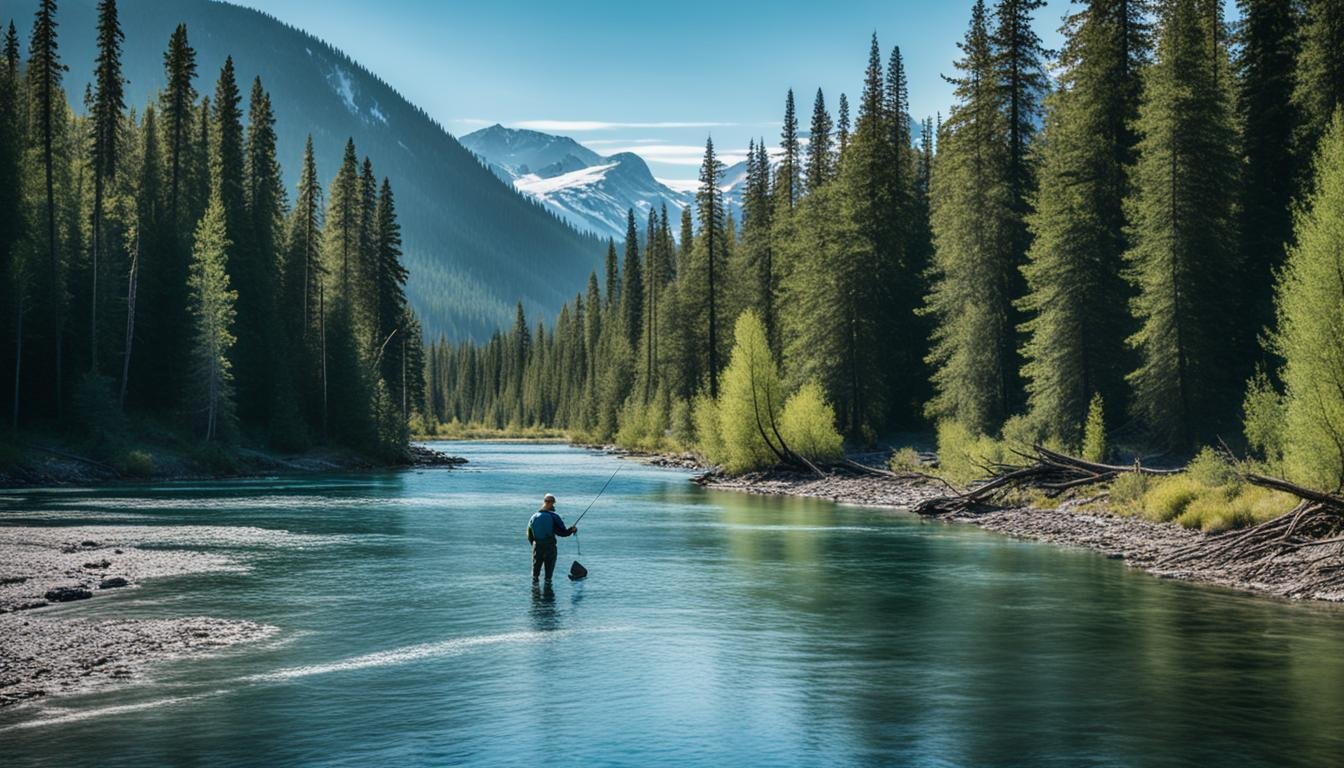
Brook Trout Fishing Guide in Canadian Waters
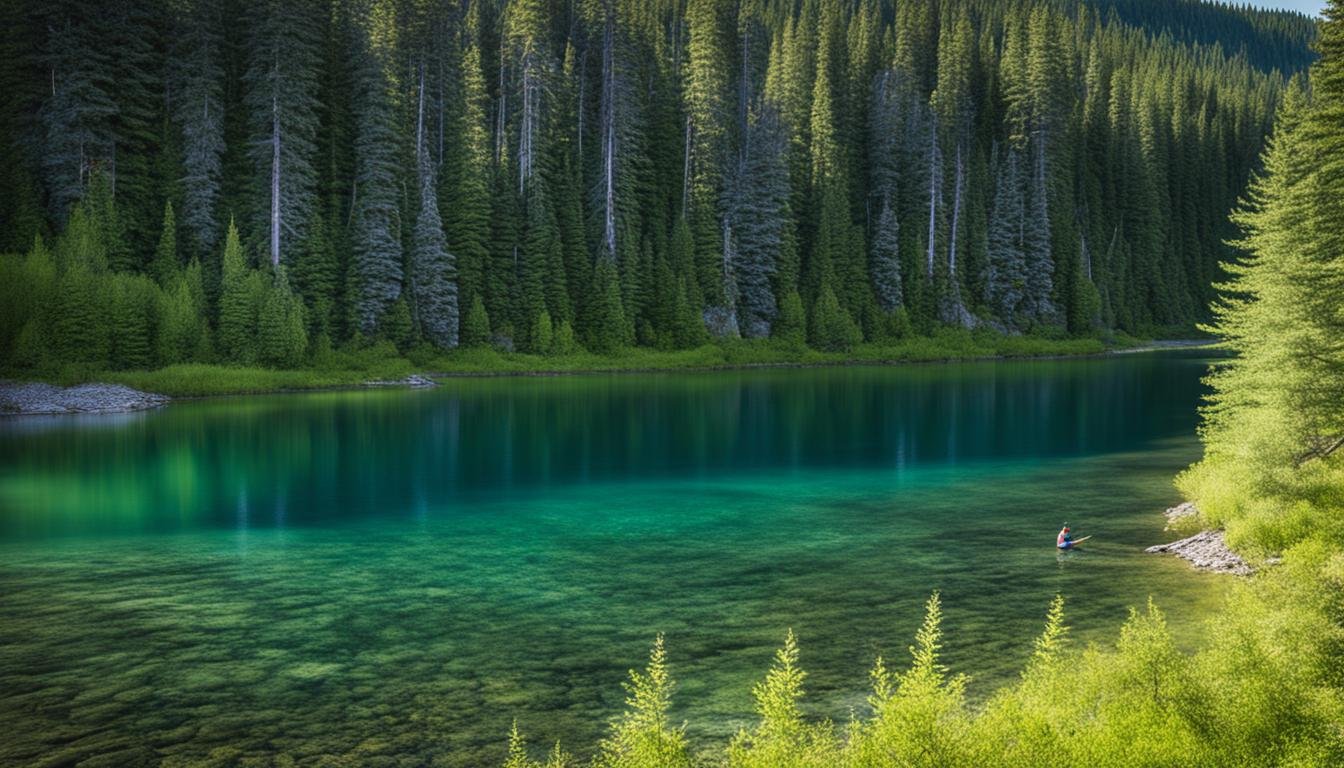
Ultimate Guide to Rainbow Trout Fishing in Canada

Ultimate Guide to Lake Trout Fishing in Canada

Grayling Fishing Guide in Canadian Waters
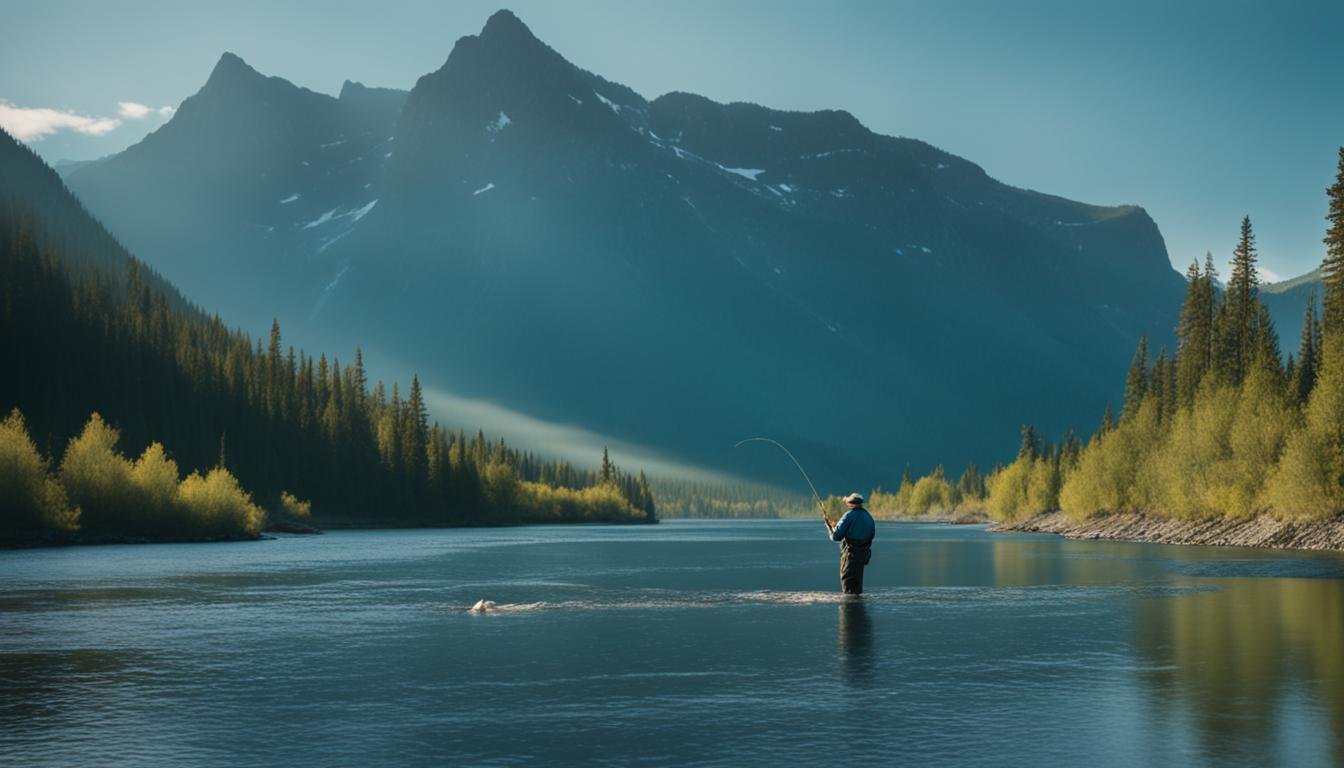
Fishing Rainbow Runner: Catching Tips in Canada

Fishing White Bass: Expert Tips for Anglers in Canada

Northern Pike Fishing: Master Techniques for Success

Explore master techniques for successful northern pike fishing. Learn how to locate fish, catch more and bigger pike this summer.
How to Catch Bluegill Fish: A Canadian Angler’s Guide

Fishing for Specific Species – Techniques & Best Spots

Master the Art of Carpfishing – Your Guide to Success.
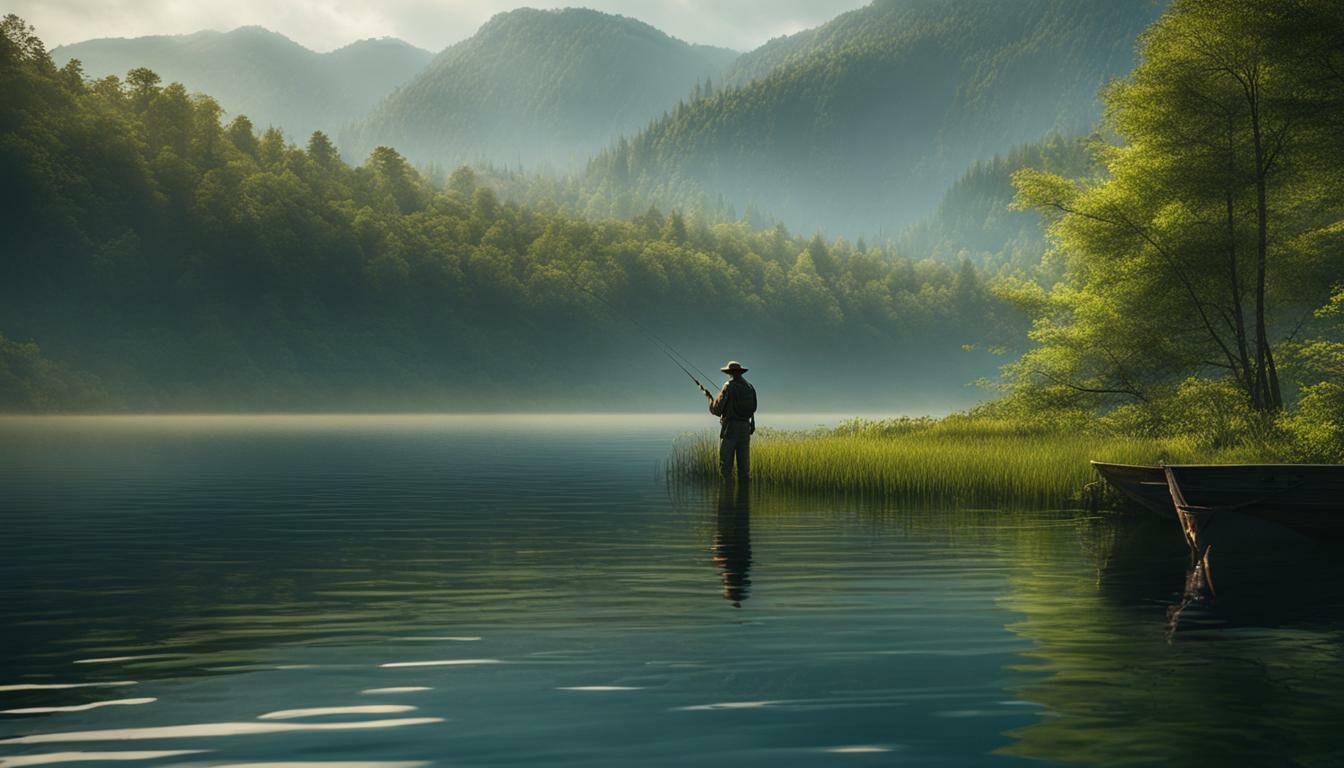
Fishing for Shark Fish: Tips, Techniques, and Safety Measures

Fishing Catfish: The Ultimate Guide to Catching Catfish!

Catch more catfish with our ultimate guide! Expert tips, tactics, and step-by-step instructions for fishing catfish. Don’t miss out!
Fishing Grass Carp: The Ultimate Guide
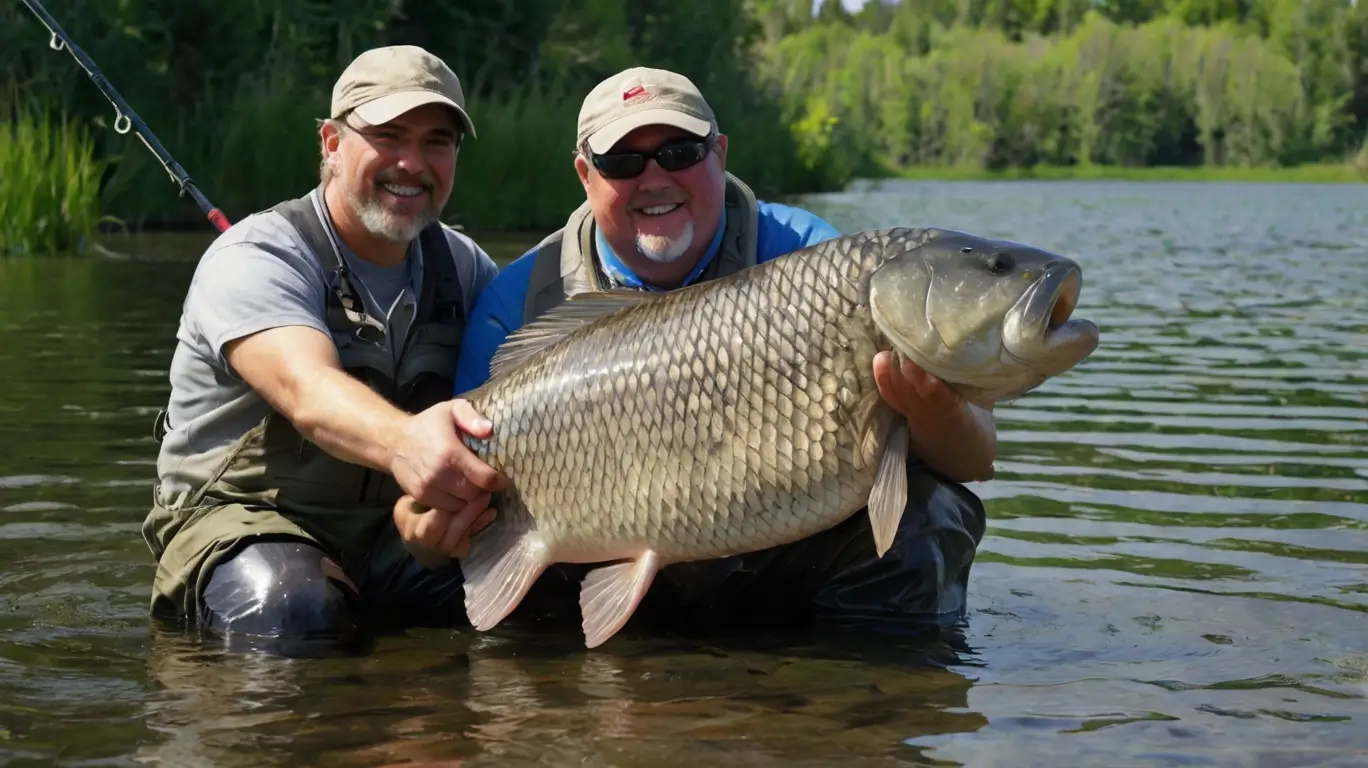
Fishing for Flounder in Canada: Your Ultimate Guide
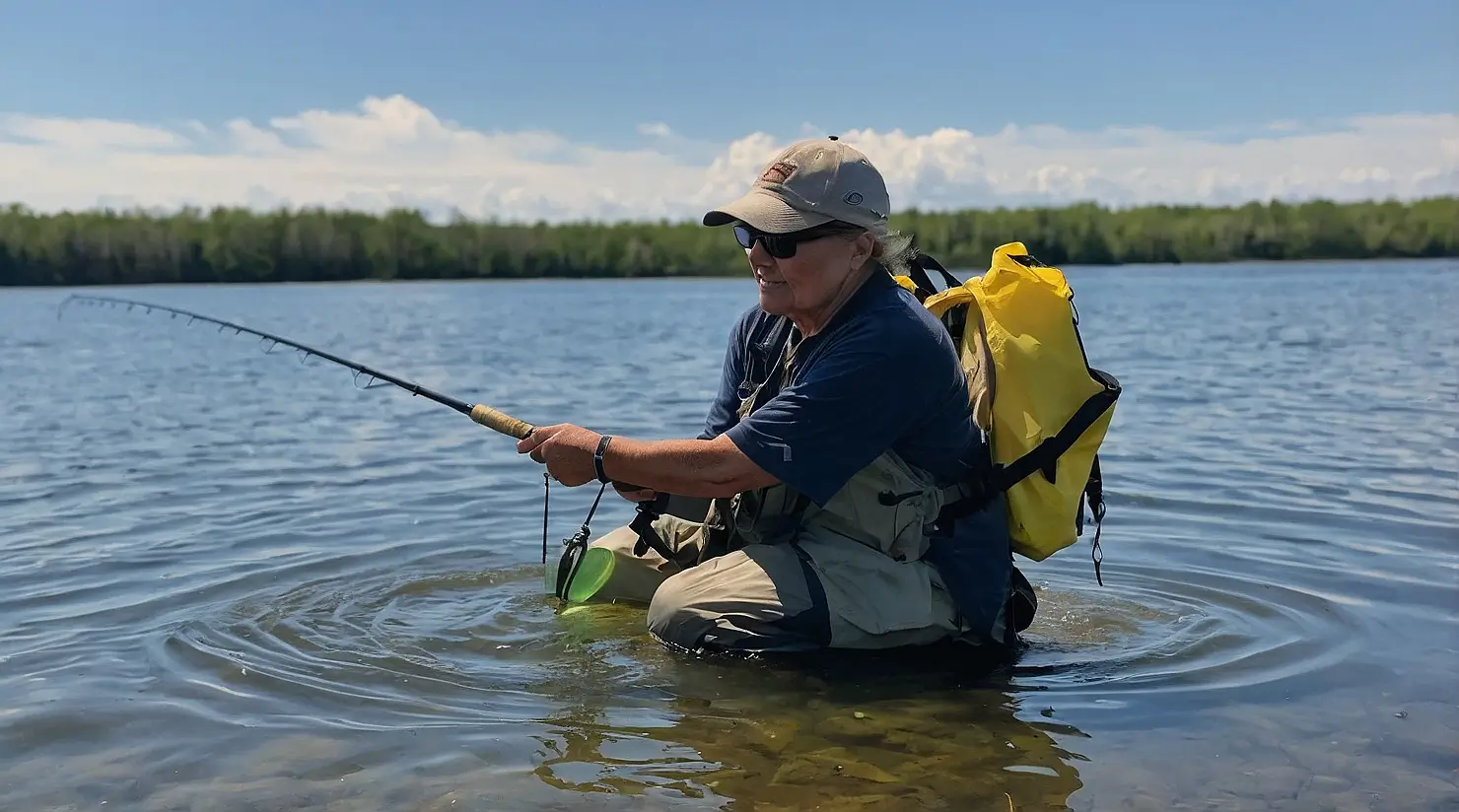
Source Links
- https://www.thelandbetween.ca/2024/05/how-to-be-fish-friendly-tips-and-tricks-for-responsible-recreational-fishing/
- https://fishingmanitoba.com/grand-slam-fishing-success-in-canada/
- https://fishingbooker.com/blog/ontario-fishing/
- https://fishingbooker.com/blog/canada-fishing/
- https://www.destinationontario.com/en-ca/articles/ontarios-top-ten-record-fish
- https://fishingworld.ca/pages/ontario-fish-species
- https://www.destinationontario.com/en-ca/articles/everything-you-need-know-about-fishing-ontario
- http://www.ontario.ca/document/ontario-fishing-regulations-summary/fisheries-management-zone-18
- https://cvc.ca/fishing-regulations/
- https://www.joelnelsonoutdoors.com/blog/2017/2/2/how-to-catch-anything-a-multi-species-approach
- https://www.seachoice.org/info-centre/fisheries/bycatch/
- https://en.wikipedia.org/wiki/Bycatch
- https://fishingbooker.com/blog/best-fishing-canada/
- https://www.outdoorcanada.ca/canadas-30-very-best-fishing-hot-spots/
- https://www.destinationontario.com/en-ca/articles/top-fishing-destinations-ontario
- https://oceana.ca/en/blog/how-seafood-caught-look-fishing-gear-types-canada/
- https://www.thefranklinclub.ca/the-most-popular-types-of-fishing-in-canada/
- https://www.wefishcanada.ca/fresh-water-fish-species/
- https://adventures.com/canada/tours/activities/fishing/
- https://kenauk.com/activites/guidedfishing/
- https://www.andymyerslodge.com/about/packages/
- http://www.ontario.ca/document/ontario-fishing-regulations-summary/general-fishing-regulations
- https://www.dfo-mpo.gc.ca/acts-lois/faq-eng.htm
- https://albertaregulations.ca/fishingregs/general-regs.html
- https://smoothmovesseats.com/blog/the-ultimate-fishing-gear-guide-must-haves-for-every-angler/
- https://deepersonar.com/blogs/us/top-7-fishing-gear-essentials-first-time-anglers
- https://www.dunfordsofhavelock.com/blog/essentials-of-boat-fishing-in-canadas-lakes–65400
- https://ogsl.ca/en/species-identification-guide-marine-fish/
- https://www.michiganseagrant.org/lessons/lessons/by-broad-concept/life-science/fish-indentification/
- https://files.ontario.ca/environment-and-energy/fishing/198234.pdf
- http://www.ontario.ca/page/guide-eating-ontario-fish
- https://www.gofishbc.com/learn/fishing-tips/education/know-your-fish-bc-freshwater-fish-identification/
- https://worldoceanreview.com/en/wor-2/ecosystems-and-species/endangered-species/




